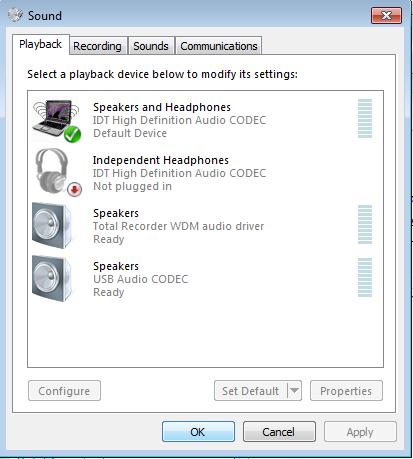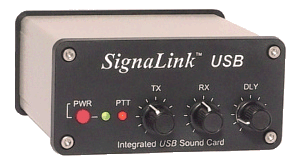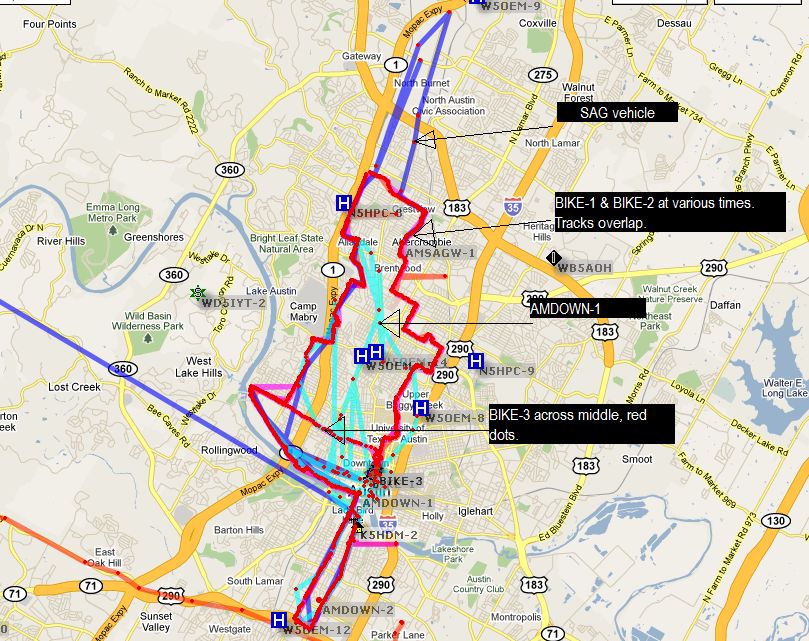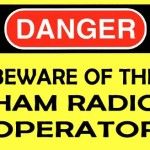(resource links at the bottom)
My primary objective in getting the netbook (HP Mini 210 HD)was to move all of my ham radio programs to it for (a) the (mostly) ham dedicated computer and (b) the portability. It has the DXlabs suite with rig control, logging, psk31 and all that DXlabs has. It also has EchoLink (www.echolink.org) and the programs related to the TinyTrak4 TNC ).
Next was to make the psk31 work through the SignaLink USB device (SL) ), and then Winlink using the AGW Packet Engine and Paclink from Winlink.org . Psk31 was easy. In DXlabs WinWarbler I just picked the SL soundcard and it immediately worked.
Next for AGWPE. I had used it on the other computer so was quite familiar with setting it up and creating a “port” for the soundcard. I referenced the additional instructions from Ralph Milnes relative to the SL. Then I set up Paclink that I had used often and voila! Nothing. I could receive and decode packets, but could not transmit. The PTT on the SL was never triggered.
Then I installed the (free) AGW Terminal program (tcp version at which generates a packet directly to AGWPE.
Diagnosis was done by using the AGW Terminal program. Clicking on the “Ask QRA” icon (it’s the little tower ?) generates a packet to AGWPE each time you click it.
Using it, I could see the packet generated on the AGWPE monitor screen, and the little AGWPE modem icon in the system tray transmit indicator would light up. So I knew a signal was going somewhere.
So (this is a Windows 7 computer) I opened the audio playback devices page where I could see all of the audio devices.
When I clicked “Ask QRA” I saw where the packet was going — to TotalRecorder! As I clicked “Ask QRA” in AGW Terminal I could see full bars on the TotalRecorder device.
TotalRecorder is a fantastic audio program that has its own drivers that apparently can intercept playback audio for processing. It was catching the Packet and not letting it get to the SignaLink. I merely disabled those drivers, deleted and redid the AGWPE port and, it works!
An oddity is that my psk31 program did not have that problem (WinWarbler from DXlabs). My guess is that it addresses the SL directly and AGWPE addresses it in some fashion that allowed this interception.
Interesting, frustrating, and mildly educational problem. The solution probably would never apply to anyone else, but maybe the diagnostic steps will.
Bottom line is that the SignaLink USB works great. For about $100 you can do everything digital and need only one USB connection to your computer. It has it’s own soundcard so you offload that processing from your computer.
From all of my research, it appears that having TX at 9 o’clock and RX at 12 o’clock with delay (DLY) full counterclockwise works well as a starter.
In psk31 you have full, gradual control on power output with the TX adjustment right on the front of the device — no more messing with Windows sliders.
Links
SignaLink USB / Win 7 issues specifically
Great overall soundcard page: http://kc2rlm.info/soundcardpacket/1signalinkusb.htm
Msg 7875 in SV2AGW group: http://groups.yahoo.com/group/SV2AGW/message/7875
Msg 7879 in that same group: http://groups.yahoo.com/group/SV2AGW/message/7879?threaded=1
Both of those threads discuss the problem at length.
Soundcards generally
Good Yahoo Group for AGWPE Pro: http://groups.yahoo.com/group/agwpe_pro/
Another AGWPE group: http://groups.yahoo.com/group/SV2AGW/
AGW Packet Engine Pro: http://www.sv2agw.com/ham/pepro.htm
AGW Terminal program: http://www.sv2agw.com/downloads/agwtermTcp.zip
SignaLink USB: http://tigertronics.com/slusbmain.htm
Soundcard packet tips: http://www.kc2rlm.info/soundcardpacket/
Packet-specific
Paclink software: http://www.winlink.org/ClientSoftware
Paclink setup instructions: http://98.243.25.192:81/nren/winlink/paclink.pdf








